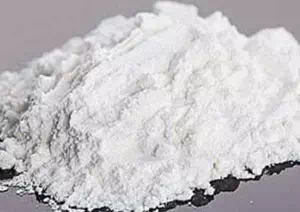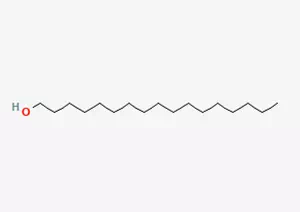All Categories



cetearyl alcohol CAS 67762-27-0, cetearyl alcohol, CAS 67762-27-0
In the wonderful world of chemistry, cetaceol has demonstrated its unique properties and diverse applications. Cetacol is a solid white crystal. It is not a loose and amorphous solid but exists stably in the form of relatively regular wax blocks or fine particles.
CAS : 67762-27-0
Formula : C18H38O.C16H34O
Mol. wt. : 512.941
EINECS : 67762-27-0
Chemical Name | Cetearyl Alcohol |
Other Name | Mixed butano; Cetostearyl alcohol; Alkyl C16-18 alcohol |
CAS | 67762-27-0 |
EINECS | 267-008-6 |
Type | Daily Chemicals; Organic raw materials |
Molecular Formula | C18H38O.C16H34O |
Molecular Weight | 512.941 |

Melting point | 51 – 53°C |
Boiling point | 330.79℃[at 101 325 Pa] |
density | 0.8[at 20℃] |
vapor pressure | 0.001Pa at 25℃ |
storage temp | Refrigerator |
solubility | Practically insoluble in water, soluble in ethanol (96 per cent) and in light petroleum. When melted, it is miscible with fatty oils, with liquid paraffin and with melted wool fat. |
In the wonderful world of chemistry, cetaceol has demonstrated its unique properties and diverse applications. Cetacol is a solid white crystal. It is not a loose and amorphous solid but exists stably in the form of relatively regular wax blocks or fine particles. When you get close and observe carefully, you will find that it presents a pure white color, as if it were elaborately carved ice and snow crystals, exuding a low-key and unique temperament.
If you sniff carefully, cetacol has a certain smell. This smell is not strong and pungent, but rather a faint and faint scent, as if it were the primitive charm emitted by some kind of plant or mineral in nature, giving people a simple yet mysterious feeling. It is worth mentioning that it also has a fragrance. This fragrance is not flamboyant, but it can add a touch of faint fragrance to the surrounding environment unconsciously, just like the floral scent that quietly wafts in the spring breeze. Although it is not strong, it is enough to make people feel its presence.
In terms of solubility, cetyl alcohol has definite characteristics. It is insoluble in water. When it is put into water, it will sink quietly to the bottom, as if there is an invisible barrier between it and the water, and they do not blend with each other. However, the situation is quite different when it comes to ethanol and chloroform. In the embrace of ethanol and chloroform, cetacol can gradually dissolve, just like ice and snow slowly melting under the warm sun, blending perfectly with them to form a uniform solution.
The chemical properties of cetacol are also very interesting. When it meets concentrated sulfuric acid, a sulfonation reaction will occur. During this process, concentrated sulfuric acid is like a magical key, opening a certain door in the molecular structure of cetacol, causing a series of complex yet orderly chemical reactions between them and generating new substances. But interestingly, cetaceol does not undergo a chemical reaction with strong alkali. Strong alkali seems to it like a stranger that cannot resonate with it, and no substantial changes occur between them.
In the field of cosmetics, cetaceol plays an indispensable role. It can ingeniously suppress the greasiness, ensuring that the skin does not feel overly greasy or heavy when using products containing it, as if putting on a thin and breathable protective coat for the skin. At the same time, it can also reduce the viscosity of the wax raw materials, enabling various components to be mixed more evenly together, just like an outstanding blending master, making the originally potentially chaotic components orderly. Moreover, it can also stabilize cosmetic lotions, keeping them in a uniform and fine state for a long time without phenomena such as stratification or sedimentation, providing a reliable guarantee for the quality of cosmetics.
And cetacyl is actually a mixture of cetacyl and stearyl. Its name is also a clever combination of these two names, as if it were a unique symbol formed by two close partners working hand in hand. Among them, cetyl stearyl alcohol, also known as cetyl alcohol, is a straight-chain saturated fatty alcohol with 16 carbon atoms. Imagine that these 16 carbon atoms are like 16 loyal guards, neatly arranged on the molecular chain, forming its stable and orderly structure. Stearyl is a straight-chain saturated fatty alcohol with 18 carbon atoms. These 18 carbon atoms are like closely connected pearls, endowing it with unique chemical properties.
Cetyl alcohol, as a waxy substance, has a very abundant source. It can be naturally extracted from plants such as coconut oil or palm oil. Among the fruits or seeds of these plants, there are rich treasures bestowed by nature. Through a series of meticulous extraction processes, cetaceol is separated out just like gold sifted from the gravel. Moreover, with the continuous development of modern science and technology, it can also be produced in the laboratory. In the tech-savvy environment of the laboratory, scientists employ a variety of advanced instruments and methods, just like magicians, to ingeniously combine and react various raw materials, ultimately producing pure cetaceol.
In terms of application scope, theoretically, cetacol can be found in all products used for skin and hair. It is like an all-round skincare assistant, providing care for our skin and hair everywhere. The most common application scenario is that it is widely used in shampoos, face creams, lotions and moisturizing creams. In shampoo, it can help clean the scalp while preventing the hair from feeling too dry. In face creams and lotions, it acts like a caring guardian, locking in moisture for the skin and keeping it hydrated and smooth at all times. In moisturizing cream, it plays a crucial role, enhancing the moisturizing effect and keeping the skin soft and delicate even in dry environments. In the big family of cosmetics, cetyl alcohols play a crucial role as stabilizers. They are like loyal guardians, constantly safeguarding the stability of cosmetics, preventing the separation of products during use, and ensuring that consumers can enjoy a high-quality cosmetic experience.

In today's rich and diverse cosmetics and various related industries, cetaceol plays a crucial and extensive role. It is often widely used in steroid creams, emollients and various cosmetics. Under certain specific formula and production process requirements, sometimes only one stereoisomer is used to achieve more precise and ideal product effects.
It is worth mentioning that cetacol is also one of the key components of emulsified wax. For this reason, it can be found in many common emulsified ointments and water-based creams. It is like a silent and dedicated unsung hero, contributing its own strength to the stability and efficacy of these products.
In terms of its specific uses, cetacol performs exceptionally well in softening the skin and hair. When we apply products containing cetacol to the skin or hair, it can penetrate deeply, as if injecting a moisturizing force into the skin and hair, making them softer and smoother. Meanwhile, in the production process of cosmetics, cetaceol also plays an important role in thickening and stabilizing. Whether it is a fine lotion or various hair care products, with its presence, the texture of the product will be more thick and moderate, and it will not easily stratify or deteriorate, thus ensuring the stability and effectiveness of the product during use.
As a highly recognized emollient, ethanol is regarded as an excellent ingredient for soothing and treating dry skin. It can be found in a wide range of daily skin care and beauty products. For instance, in the body lotions we use daily, cetacol can help the skin retain moisture and keep it hydrated all the time. In the moisturizing cream, it can enhance the moisturizing effect, keeping the skin soft and smooth even in a dry environment. In the skin cream, it works in synergy with other ingredients to provide comprehensive nourishment and protection for the skin. In sunscreen, cetaceol not only helps the product adhere better to the skin, but also alleviates to a certain extent the dryness that may be caused by sunscreen ingredients. In shampoo, it can moisturize the hair while cleaning it and reduce frizz. In hair conditioners, cetaceol can make hair strands smoother and brighter. In hair removal cream, it can reduce the irritation to the skin during the hair removal process. In mousse, it helps maintain the shaping effect of the product. Among the anti-irritability creams, it is a powerful weapon against irritability. In hair dyes, it can protect hair from chemical damage. In mascara, it can make eyelashes thicker and more curled.
Let's talk about C16-18 alcohol. It is carefully obtained from natural oils through a series of complex and meticulous processes, including esterification, hydrogenation and fractionation. This fatty alcohol has an extremely wide range of applications and holds an indispensable position in numerous industries such as cosmetics, plastics, leather, textiles, and synthetic detergents. In the field of cosmetics, it is applicable to all kinds of products. Especially when used as a base, it is particularly suitable for the production of products such as face creams and lotions. In the medical field, it has demonstrated unique advantages and can be directly used in W/O emulsifier creams, ointment bases, etc., providing professional support and guarantee for hair care and skin care. Not only that, in industry, it also serves as a raw material for textile auxiliaries, contributing its share to the production and development of the textile industry.
Cetyl alcohol itself is an emulsified and stabilizing wax with unique properties. Its sources are mainly carefully refined from vegetable oils and natural waxes. This natural source makes it stand out among numerous chemical components, giving people a safer and milder feeling. Meanwhile, it is also widely used as an emollient due to its excellent moisturizing performance. When it is added to various finished products, it can significantly increase the viscosity of the products, making them more textured and providing a better user experience. Cetyl alcohol, in fact, is a fatty alcohol mixture mainly composed of cetyl alcohol and stearic alcohol. This unique composition structure endows it with a series of excellent properties.
However, it should be noted that although cetacol (cas# 67762-27-0) has extensive applications in many fields, it is also a fatty alcohol known to cause contact dermatitis. This requires that when producing and using products containing cetaceol, extra attention should be paid to safety protection and allergy tests. In addition, cetacol also has further applications in scientific research and the medical field. For instance, it is used to prepare solid lipid nanoparticles, nanostructured lipid carriers and lornoxicam transdermal delivery nanoemulsions, etc. In these cutting-edge research fields, cetacol, with its unique physical and chemical properties, offers scientists more possibilities and space for innovation.
* Prompt reply and 24 hours online, professional team to provide best price and high quality product.
* Sample testing support.
* Every batch of products will be tested to ensureits quality.
*The packing also can be according the customers` requirment.
*Any inquiries will be replied within 24 hours.
*we provide Commerical Invoice, Packing List, Bill of loading, COA , Health certificate and Origin certificate. If your markets have any special requirements, let us know.